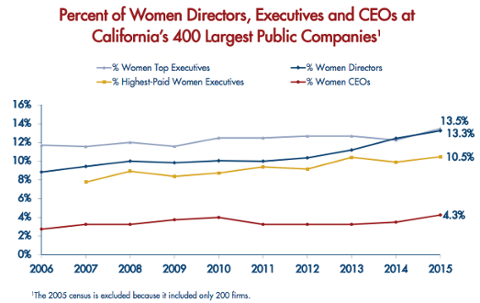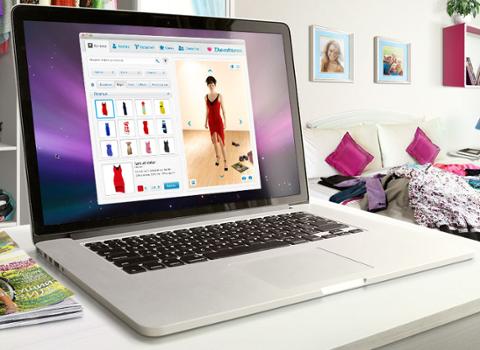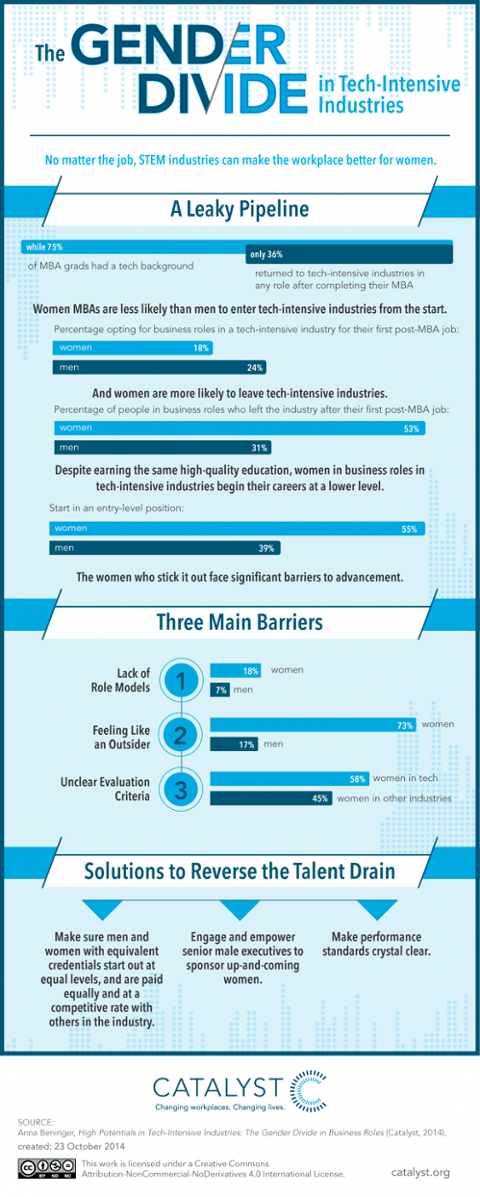Not too long ago, Business Insider CTO Pax Dickinson was
forced to resign after he posted a series of tweets that were dismissive of concerns over the role of women in tech. In defending himself, Dickinson
pointed out that he reported to a woman at Business Insider for the past three years, and that his longest tenured senior developer was a woman. The incident followed on the heels of
two sexist, inappropriate presentations at TechCrunch Disrupt in September. In light of the events, many bloggers began reflecting on tech culture and whether such incidents are unusual, or simply expressions of typical views.
'Normal' Inappropriate Behavior
Sonia Connolly, a Senior Software Engineer at LivingSocial, has been working as a developer since her first summer job in 1987. She holds a master’s degree in Computer Science from UC Berkeley. Although she says she hasn’t experienced blatant sexism in her industry, she has noticed the subtle and pervasive kind. “What I get is the people who expect me to not know what I’m doing but are willing to keep their mouths shut to find out whether I do or not,” she says. “They don't tell me, 'you must be a junior programmer,' they just kind of act like it until I surprise them by actually knowing what I'm doing.”

Although she has worked in a company in the Bay Area with female managers and directors and worked for a female head of engineering for a fairly large startup, upon moving to Portland, Ore., Connolly found herself with only five female engineers out of a company’s123. She recalls watching a presentation on security from someone outside of the business. “We were watching it remotely because my company's really distributed, and there was an internal chat room, and I noted that the typical user is always male, except in this case,” she recalls. “They were talking about a victim of a security incident, and so it was clearly a woman they were using as a symbol for a user. I said, ‘Yeah, the default user is always male until it's a victim… and also of course the silhouette of the victim was white and the silhouette of the person invading was black.” In return for speaking up, Connolly received quite a round of backlash. “Boy, people came down on me,” she says. “It wasn't OK that I brought that up. They thought I was attacking the speaker and I wasn't. I was pointing out an aspect of his presentation. I wasn't saying that he was a bad person. People who were not white men responded that way [as well]. It's our culture to support and defend the dominant groups.”
Speaking Out
Ruby Developer and RailsBridge Co-Founder Sarah Mei, who has an academic CS background backed by a decade of real-world app building, says that inappropriate presentations are not uncommon, and that speaking out at the moment it happens is important. “I’m the one who will ask the awkward questions in the Q and A. That is my job … because if I do it, other people will do it,” she says. While working as a Software Engineer at Pivotal Labs, Mei attended a lunchtime tech talk in which a developer used example code including the string “Princess Leia in a chainmail bikini.” Says Mei: “That phrase was up on the screen a lot. Everything else was pretty normal stuff. At the end of the presentation he asked if there were any questions. And a lot of people asked questions about the technical content, but I raised my hand and I said, I’m curious why you chose that example.” Just asking the question made a big difference. “We had a similar thing happen a month or two later and the presenter was basically challenged almost immediately by a man in the audience,” Mei recalls. Though Mei believes that most men want to do the right thing, she says, “they don’t read social cues very well and they don’t understand what’s appropriate.” Further, Mei points out, incidents at conferences where speakers put pornography or near-pornography in their presentations are still all too common.
An Improving Atmosphere
Mei, who feels that changing the balance of the audience at events is important, has given a lot of presentations herself. “When I first started doing conference talks, I thought that maybe they were picking me because they wanted more diversity in their speaker lineup and not because they thought my talk would be good,” she says. “As I did my talks and got better at it, I actually realized I did a better job than most people, and am better at it than most men, and that actually I don’t think it was ever the case that they picked me because of my gender. They picked me because I give good talks and can organize technical information well.” Despite ongoing challenges, “the vast majority of the time, I feel comfortable,” Mei says. She’s also noticed that the open source community is much more apt to discuss gender issues than it was when she started in 1999. “Back then it wasn’t even something we talked about,” she says. Though it happens less and less, Mei still sometimes finds herself on a team with people who have never worked with women before. She points out that
research indicates diverse teams do better than homogenous ones, even if they’re less qualified on paper. “When you are interacting with people that don’t look like you, your brain is getting in a mode where it’s not completely comfortable. You have to work a little bit harder.” “I don’t think a lot of people understand the reason why diversity is important,” Mei observes. “We as a society have some amazingly difficult problems to solve and we can’t solve them if only half the people in the world that are qualified to work on them work on them.” Software Developer Elise Worthy, who was working as a marketer alongside programmers for startup Web applications, notices that increased technical clout has actually improved the way she gets perceived. “I definitely get treated differently and people think I’m more credible and more interesting because I am a programmer and not a marketer,” she explains. “They’ll say, ‘Oh! I didn’t realize you were actually smart!’” Though she says the majority of the men she works with are supportive, “there’s sort of a spectrum of people that make questionable comments, and there’s a handful of people I don’t want to interact with.” Meanwhile, Web Designer and UI Developer Jen Myers, who’s worked in design and front end development for a decade, counts herself as fortunate in that she hasn’t confronted any difficult personal experiences herself. “I don’t want to be dismissive of anyone’s experience, but I want to be honest about mine. I am fortunate to be around people that don’t say those things on a regular basis,” she says. “I think overall the atmosphere is good. I think you hear more about the bad people who are louder, though, which sometimes represents the underlying part of the culture we don’t always question or think about.”
Moving Forward
On Pax Dickinson’s tweets, she believes, “even though he and his comments are ridiculous, way down the line they are rooted in something that is real.” “I don’t think we should shy away from speaking out about incidents and correcting that behavior,” she says. “I do think it’s important when people say or do things that are unacceptable that we call it out and consider asking the question of where that comes from…. I think for the most part, it’s something we haven’t been paying attention to or questioning because it’s under the surface.” While Myers believes speaking out about things that are wrong is important, she also believes attention should be paid to the good things people are doing within the community. For example, she organizes chapters and teaches classes at
Girl Develop It, an international organization aimed at making programming more accessible to women. She also works full-time at DevBootCamp, an accelerated Ruby on Rails training program. Media scandals notwithstanding, increased opportunities for female developers, along with people speaking out about incidents as they occur and conference lineups that increasingly include more women, are moving the industry forward.
 Although she has worked in a company in the Bay Area with female managers and directors and worked for a female head of engineering for a fairly large startup, upon moving to Portland, Ore., Connolly found herself with only five female engineers out of a company’s123. She recalls watching a presentation on security from someone outside of the business. “We were watching it remotely because my company's really distributed, and there was an internal chat room, and I noted that the typical user is always male, except in this case,” she recalls. “They were talking about a victim of a security incident, and so it was clearly a woman they were using as a symbol for a user. I said, ‘Yeah, the default user is always male until it's a victim… and also of course the silhouette of the victim was white and the silhouette of the person invading was black.” In return for speaking up, Connolly received quite a round of backlash. “Boy, people came down on me,” she says. “It wasn't OK that I brought that up. They thought I was attacking the speaker and I wasn't. I was pointing out an aspect of his presentation. I wasn't saying that he was a bad person. People who were not white men responded that way [as well]. It's our culture to support and defend the dominant groups.”
Although she has worked in a company in the Bay Area with female managers and directors and worked for a female head of engineering for a fairly large startup, upon moving to Portland, Ore., Connolly found herself with only five female engineers out of a company’s123. She recalls watching a presentation on security from someone outside of the business. “We were watching it remotely because my company's really distributed, and there was an internal chat room, and I noted that the typical user is always male, except in this case,” she recalls. “They were talking about a victim of a security incident, and so it was clearly a woman they were using as a symbol for a user. I said, ‘Yeah, the default user is always male until it's a victim… and also of course the silhouette of the victim was white and the silhouette of the person invading was black.” In return for speaking up, Connolly received quite a round of backlash. “Boy, people came down on me,” she says. “It wasn't OK that I brought that up. They thought I was attacking the speaker and I wasn't. I was pointing out an aspect of his presentation. I wasn't saying that he was a bad person. People who were not white men responded that way [as well]. It's our culture to support and defend the dominant groups.”



